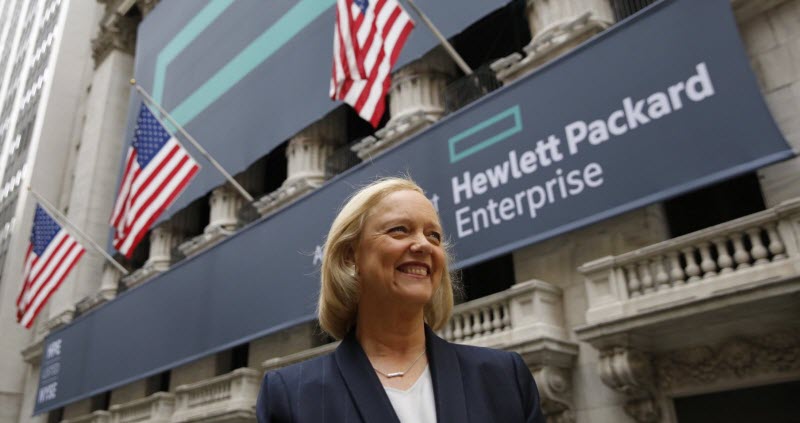 INFRA
INFRA
 INFRA
INFRA
 INFRA
INFRA
Hewlett Packard Enterprise Co. closed out its first year as an independent company with a fiscal fourth quarter earnings report that narrowly missed revenue forecasts but slightly exceeded earnings-per-share estimates.
The maker of computer servers, storage and networking gear and services also forecast a profit of 44 cents a share in the current quarter, a bit shy of consensus estimates of 46 cents. Shares, which fell 1 percent in regular trading, declined almost 2 percent in after-hours trading.
A 14 percent decline in Asia-Pacific revenues and a somewhat smaller drop in the Europe/Middle East/Africa region took their toll. For the full year, HPE reported $50.1 billion in revenues, down 4 percent from the previous year but up 2 percent when adjusted for divestitures and currency.
“HPE delivered the business performance we promised, fulfilled our commitment to introduce groundbreaking innovation and began to transform the company through strategic changes designed to enable even better financial performance,” Chief Executive Meg Whitman (above) said in a prepared statement.
On its quarterly earnings call, company officials painted a picture of a leaner, more agile business that is no longer encumbered by operations that aren’t core to its enterprise hardware and services business. In his first year as an independent company, HPE spun off its services business, the former Electronic Data Systems Corp., and divested nearly all of its software holdings in a sale to Micro Focus International plc for $8.8 billion. The company also acquired Silicon Graphics International Corp., a business that is closer to its core workstation and technical computing focus.
“As a result of these divestitures, we will have no stranded revenues by the end of this year,” Whitman said, referring to non-core operations. The former Hewlett-Packard Co. grew by snapping up dozens of acquired companies, creating a legacy that HPE is still working through. “The overhead needed to knit together the old HP was a very high percentage of expenses,” Whitman said.
The slimming-down process would appear to be nearly complete. Revenue from just two lines of business — enterprise hardware and enterprise services — comprised more than 90 percent of revenues in the fourth quarter.
In today’s tumultuous enterprise computing environment, legacy giants such as HPE are having to shrink before they grow again. Whitman has vowed to divest all but HPE’s core businesses in order to focus on data center and cloud infrastructure, and that process is mostly complete.
But to grow again in a declining enterprise market, HP will probably need to become acquisitive. “We see the company potentially considering acquisitions in storage, networking or hyperconvergence, which could help increase exposure to higher growth, higher margin markets,” Morgan Stanley & Co. Katy Huberty wrote in a note to clients.
Bloomberg speculates that hyper-converged vendor SimpliVity Inc. could be a target, as well as Pure Storage Inc. and Barracuda Networks Inc.
“I think significant organic growth going forward will be nonexistent due to the competition from the public cloud providers,” Morningstar Inc. analyst Tim Feeney told the news service. “Whitman may look to [mergers & acquisitions] to augment organic growth.”
Executives were cautious about the state of the server market, saying growth businesses like hyper-converged servers, storage and networking are being offset by declines in the core integrated server business, known as ISS. “The main pressure we’re seeing is in ISS rack,” Whitman said. “Other parts of the server business are doing very well. Hyper-converged is growing and is higher-margin than our core market. [If we can shore up core ISS systems] then I’m confident we’re gaining traction in other areas.” HPE forecast its server sales to grow slightly in the next quarter, despite an overall decline in the market.
Whitman said storage will become a strong growth area once the company works through accelerating declines in disk-based storage, which fell 11 percent in the quarter. The company’s 3Par storage business now brings in $750 million annually, and half of that is flash media. “I think you’ll continue to see storage as a strength for us. We’re feeling pretty good about the 2017 outlook,” she said.
The newest HPE initiative is in the Internet of things, where the company is making a bet that customers will want to conduct analytics at the edge in order to avoid sending large amounts of data over network backbones. Although revenues are currently small, McKinsey Global Institute has estimated that IoT’s impact on the global economy could exceed $6 trillion by 2025. “We want to become known as the IT in IoT with compute at the edge,” Whitman said.
THANK YOU